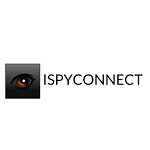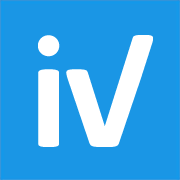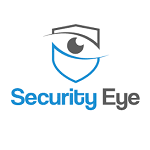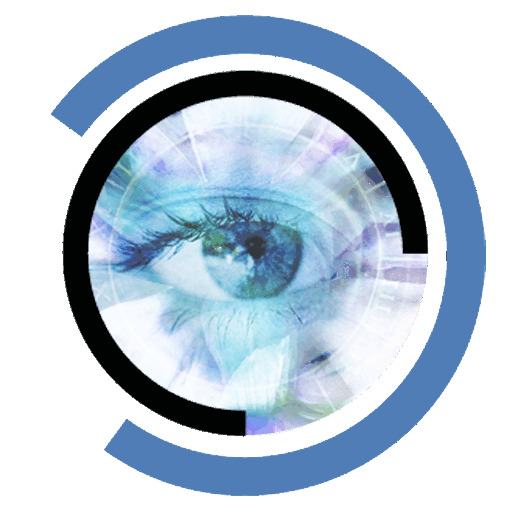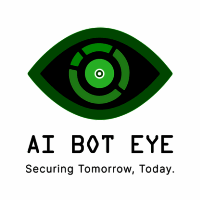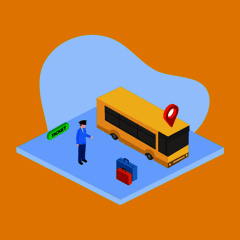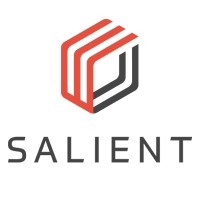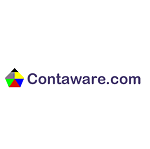Yes, surveillance software can be accessible from various devices and platforms. It is meant to work with a variety of operating systems and devices, including smartphones, tablets, and laptops. This enables users to monitor the target device from any location and at any time. Furthermore, most surveillance software is cross-platform compatible, letting users to view it from multiple devices simultaneously for a more varied monitoring experience.
List of 20 Best Surveillance Software
Exacq is a highly versatile video surveillance solution that offers advanced security features for businesses of any size. With a comprehensive range of products, it seamlessly integrates with different access control tools for efficient monitoring a...Read More Exacq
SmartViewer solution for streamlined video surveillance. This innovative cloud-based software boasts a user-friendly interface for effortless monitoring. Our exceptional support team is always available via email or phone. Experience the convenience...Read More SmartViewer
iSpyConnect is a leading surveillance software that allows you to easily monitor your CCTV cameras from any location. Its the perfect solution for protecting your home, keeping an eye on your office, or supervising your employees. With over two milli...Read More iSpyConnect
Luxriot Evo is a security solution for businesses of all sizes. Our comprehensive surveillance software offers advanced features such as face recognition and video content analysis. With a live demo available, experience first-hand how Luxriot Evo ca...Read More Luxriot Evo
Ivideon is a highly effective and free cloud-based IP surveillance software that offers support for multiple cameras and webcams. It is the ideal solution for protecting both residential and commercial properties. With its comprehensive range of feat...Read More Ivideon
ZoneMinder is a powerful, open-source video surveillance software that provides comprehensive protection for your home and office. With simple setup and advanced artificial intelligence technology, this feature-packed tool offers top-level security...Read More ZoneMinder
Security Eye is a personal surveillance program that turns your computer into a top-of-the-line security system. Keep a close eye on your home, office, or store from any location with ease. Our software is compatible with various webcams and supports...Read More Security Eye
Blue Iris is video surveillance software that ensures the safety and security of your home, family, business, and other important assets. With two options to choose from, the FE edition can support up to 64 cameras while the LE edition is suitable fo...Read More Blue Iris
AI Bot Eye – our cutting-edge security software that takes CCTV systems to the next level. By incorporating advanced features like facial recognition, ANPR, Fire & Smoke Detection, and HeatMap Analysis, AI Bot Eye amplifies your surveillance c...Read More AI Bot Eye
Willing Webcam software that simplifies the process of capturing live videos and images. Preserve them on your device or instantly share them on your website. Automated uploads allow for flexible content publishing. Display your webcam footage with e...Read More Willing Webcam
Experience the cutting-edge technology of Facia.ai is the Face Recognition platform with 3D Liveness Detection. Our advanced features ensure the utmost security for your business by streamlining the identity verification process. With Facia.ai, only...Read More Facia.ai
eTechSchoolBus: is the GPS tracking and surveillance solution for school buses. This robust software offers a range of features for parents and school personnel, ensuring the utmost safety and security for children during their commute to school. Wit...Read More eTechSchoolBus
SightHound - the leading surveillance solution for desktop, MAC, Android, and iPhones. With its advanced facial recognition search technology, it offers unparalleled protection for your home and business. It is compatible with all IP cameras and webc...Read More Sighthound
Bluecherry VS is a and free surveillance software that comes with a wide range of features. Its intuitive interface and ability to work with different network cameras make it a perfect choice for effortless monitoring and access control based on user...Read More Bluecherry VS
Salient Systems is an industry-leading video surveillance software that offers advanced technology and comprehensive security features. Its user-friendly interface and simple learning process make it a cost-effective and customizable solution for bus...Read More Salient Systems
SecuritySpy is advanced video surveillance software designed to safeguard your home or business. With its robust features, it can easily adapt to any security requirements you may have. Its scalability and flexibility allow for comprehensive monitori...Read More SecuritySpy
Perfect Surveillance, the most comprehensive video surveillance software on the market. Our advanced platform offers a range of features, including a camera viewer, recorder, and webcam monitor, all designed to give you complete control over your sec...Read More Perfect Surveillance
Camcloud is a cloud-based video surveillance solution for businesses of any size. Ideal for multi-location enterprises as well as small companies, this platform provides a complete range of features to ensure the safety and security of your premises...Read More Camcloud
ContaCam is a highly versatile video surveillance software that utilizes your webcam to create a motion detection security system for live monitoring. With a user-friendly interface and support for multiple languages, this dynamic program also offers...Read More ContaCam
QuestionPro is an innovative online research software that caters to the needs of modern businesses. With an easy-to-use interface, our platform provides a range of features including survey creation, distribution, and analysis. Utilize our robust to...Read More QuestionPro
Learn More About Surveillance Software
- What Is Surveillance Software?
- What Are The Recent Trends In Surveillance Software?
- Benefits Of Using Surveillance Software
- Important Factors To Consider While Purchasing Surveillance Software?
- What Are The Key Features To Look For In Surveillance Software?
- Why Do Businesses Need Surveillance Software?
- How Much Time Is Required To Implement Surveillance Software?
- What Is The Level Of Customization Available In Surveillance Software?
- Which Industries Can Benefit The Most From Surveillance Software?
- Conclusion
What Is Surveillance Software?
Surveillance software is a sort of computer application used to monitor and record activities and data on electronic devices. It is frequently used for security purposes, tracking and monitoring the activities of individuals or groups. One of the primary functions of surveillance software is to gather data such as keystrokes, screenshots, and internet surfing history and store it in a log for further analysis.
This information can be utilized to monitor staff productivity, potential security threats, and online activities. In addition to data collection, surveillance software provides real-time monitoring capabilities. This means that users can monitor a device's activity in real time, allowing them to take instant action if suspicious behavior is identified.
Surveillance software can be installed on a wide range of devices, such as PCs, cellphones, and tablets. It may also be used to monitor many devices from a single place, making it ideal for enterprises and organizations that need to track several devices at the same time. One of the most important aspects to look for when selecting surveillance software is the ability to modify settings and filters.
This enables the user to specify criteria for data gathering and monitoring, making the software more suited to their individual requirements. It is vital to remember that there are legal implications to deploying surveillance software, particularly in terms of privacy regulations. Before employing surveillance software, make sure you research and follow all applicable rules and regulations.
What Are The Recent Trends In Surveillance Software?
With the advancement of technology and the growing demand for security, surveillance software has become an indispensable tool for many individuals and enterprises. As the demand for surveillance software grows, the software market has developed to stay up with the most recent trends and innovations.
1. Real-Time Monitoring: A current trend in surveillance software is a move toward real-time monitoring. This allows customers to receive real-time updates and notifications for any questionable activity, making it easier to respond swiftly and avoid any dangers.
2. Cloud-Based Solutions: Cloud-based solutions are becoming increasingly popular among surveillance software suppliers. This enables simple remote access and storage of footage, making it easier for customers to manage and retrieve their surveillance data from anywhere.
3. Artificial Intelligence: As Artificial Intelligence (AI) advances, surveillance software becomes more intelligent and efficient. Artificial intelligence-powered software can now detect and analyze odd behavior automatically, decreasing the need for manual monitoring and danger detection.
4. Mobile Integration: Many consumers now expect to be able to use surveillance software from their mobile devices. Mobile integration enables real-time monitoring on the go, making it easier to stay connected and in charge of your surveillance system.
5. Improved Data Security: Data security has long been a major priority for surveillance software users. To combat this, software companies have begun to create stronger security mechanisms to protect sensitive data from unwanted access.
6. User-Friendly Interfaces: Previously, the intricacy of surveillance software made it impossible for consumers to explore and use all of its functions. However, recent trends have shifted toward building user-friendly interfaces that are simple to use, especially for non-technical consumers.
Benefits Of Using Surveillance Software
In today's digital age, surveillance software has evolved into an indispensable tool for businesses, government agencies, and even individuals. With the increase in cyber risks and the necessity to monitor various activities, surveillance software provides multiple benefits to its users.
Let's explore, we'll look at the main advantages of employing surveillance software and how it may improve the security and productivity of your business.
1. Improved Security: One of the most important benefits of employing surveillance software is its capacity to improve security. Surveillance software allows you to watch and record all actions on your property, including entrances, exits, and restricted areas. This not only deters potential invaders, but also enables you to detect and address security breaches in real time.
2. Real-Time Monitoring: Surveillance software provides real-time monitoring, allowing you to keep an eye on your facilities at all times. This is especially important for firms that run 24/7 or for remote areas that require regular monitoring. Live video feeds allow you to swiftly respond to any suspicious activity or emergency, giving you peace of mind and prompt action in the event of a security danger.
3. Employee Productivity: In addition to security, surveillance software can help increase employee productivity. With the ability to monitor employees, you can verify that they follow corporate standards and procedures while also identifying any possible concerns that may impair their productivity. This results in a more efficient and productive workforce, which benefits your business.
4. Evidence Collection: In the unfortunate event of a security breach or incident, surveillance software might provide crucial evidence. The captured video footage can be used to identify the perpetrators and, if necessary, present proof in court. This is especially important for businesses that are susceptible to theft, vandalism, and other forms of criminal activity.
5. Cost-Effective: Investing in surveillance software is an affordable way to improve security and monitoring operations. Surveillance software is a less expensive choice than paying security staff or building expensive security systems, and it provides comprehensive coverage and advanced functionality. A reliable surveillance system might also help you save money on your insurance premiums.
6. Customizable Capabilities: Surveillance software includes capabilities that can be customized to meet your individual demands and requirements. Whether you require motion detection, facial recognition, or remote viewing capabilities, surveillance software has a variety of functions to meet your individual requirements. This makes it a flexible and adaptable tool for a variety of businesses and contexts.
Important Factors To Consider While Purchasing Surveillance Software?
Surveillance software is becoming a crucial tool for corporations, organizations, and people to monitor and protect their assets and properties. With the growing need for surveillance software, the market is crowded with options, making it difficult for consumers to choose the best one.
Let's explore, we'll go over the most crucial elements to consider when selecting surveillance software, so you can make an informed decision.
1. Type Of Surveillance: The first and most important element to examine is the type of surveillance required. Do you need external or internal monitoring? Are you searching for video surveillance, audio surveillance, or both? By carefully outlining your surveillance requirements, you may narrow down your alternatives and select the best software for your purposes.
2. Features And Functionality: Prior to purchasing surveillance software, it is critical to examine its features and capabilities. Some important features to look for include motion detection, remote access, real-time monitoring, and alarm notifications. Additionally, determine whether the software includes advanced features such as facial recognition, license plate recognition, and access control integration.
3. Compatibility And Scalability: Make sure the surveillance software is compatible with your current equipment and infrastructure. This will save you the trouble and expense of replacing your existing system. Consider the scalability of the software, as your surveillance requirements may change and expand in the future.
4. User-Friendly Interface: The software should have a simple interface that is easy to navigate and utilize. This is critical, especially if you have numerous users using the software. A convoluted interface might cause confusion and errors in monitoring, jeopardizing the software's usefulness.
5. Data Security And Privacy: Because surveillance software handles sensitive information, it is critical that it has proper security measures in place to safeguard your data from unauthorized access. Look for data encryption, secure login, and user access control to protect your information.
6. Customer Assistance And Updates: When purchasing surveillance software, it is critical to assess the amount of customer assistance given by the program vendor. It is critical to have reliable technical help in the event of any problems or questions. Additionally, check to see if the software provides regular upgrades and bug patches to ensure peak performance.
7. Pricing And Budget: The price of surveillance software can range from low to high, depending on the features and functionalities. Consider your budget and select the program with the best value for money. Avoid making hasty decisions based purely on pricing; instead, consider the software's features and functionalities.
What Are The Key Features To Look For In Surveillance Software?
When it comes to selecting the best surveillance software for your purposes, there are a few crucial features to consider. These capabilities will not only assist you in efficiently monitoring your environment, but will also ensure that your program is user-friendly and dependable.
The following are the key things to look for in surveillance software.
1. Compatibility: Before making a purchase, make sure the software works with your current operating system and hardware. This will avoid any technical complications and ensure a seamless installation.
2. Video Quality: The clarity of surveillance footage is critical in detecting potential threats or occurrences. Look for software that supports high-definition video recording and playback.
3. Motion Detection: Most surveillance software can now detect motion and send notifications to your email or mobile device. This saves storage space and allows you to focus on the most relevant footage.
4. Remote Viewing: With the advent of remote work, it is critical to have the capacity to access your surveillance footage from anywhere. Look for software that provides remote viewing via a mobile app or web browser.
5. Cloud Storage: Storing film in the cloud adds an extra layer of security while also allowing for easy access and backup. Look for software that provides plenty of cloud storage alternatives.
6. Pan-Tilt-Zoom (PTZ) Capability: With this capability, you may remotely control your camera's movement and focus on select locations for a closer look. This is useful for wider areas for outdoor surveillance.
7. Encryption: To safeguard the security of your film, seek for software that supports encryption. This protects your footage from being accessed by unauthorized individuals.
8. User-Friendly Interface: A user-friendly interface is required for easy access and control of your surveillance system. Look for software with a simple learning curve and clear instructions.
9. Integration: If you already have security systems in place, search for surveillance software that integrates with them. This will provide a complete approach to security while saving you time during installation.
10. Customer Assistance: Finally, ensure sure the program you purchase provides dependable customer assistance. This will be critical if you encounter any technical issues or require assistance with the software.
Consider these crucial aspects to guarantee that the surveillance software you chose satisfies your requirements and allows you to successfully monitor your space. Remember to read reviews and compare several possibilities before making a decision. With the correct surveillance software, you may have piece of mind knowing that your environment is safe and well-managed.
Why Do Businesses Need Surveillance Software?
Surveillance software has become an indispensable tool for businesses of all sizes. With the increased use of technology in the workplace, businesses face new issues in terms of employee productivity, data security, and regulatory compliance. This is where surveillance software comes in: it enables organizations to watch their employees' activities while protecting sensitive information.
Employee productivity is critical to the success of any organization. Companies can use surveillance software to track their employees' working hours, monitor their internet usage, and record their computer activity. This provides significant insights on employee behavior, allowing business managers to spot inefficiencies and areas for improvement. Businesses may use this information to streamline their processes, increase productivity, and, eventually, boost their bottom line.
Data security is a big problem for businesses. With the rise of cyber threats, businesses must take proactive steps to protect their critical information. Surveillance software enables firms to monitor employees' access to critical data, detect suspicious activity, and prevent breaches. Businesses that keep a close eye on their digital assets might avoid costly data breaches and associated legal ramifications.
Furthermore, monitoring software assists organizations in complying with regulatory standards. Many industries, including healthcare and banking, have strong data protection and privacy requirements. Surveillance software can help firms achieve these criteria by providing extensive logs and data on employee activity. This documentation not only allows firms to demonstrate compliance, but it also serves as evidence in the event of a legal disagreement.
How Much Time Is Required To Implement Surveillance Software?
The time required to develop surveillance software varies according to a few major parameters. These include the software's complexity, the scale and extent of your surveillance requirements, and the technical expertise of your IT team. In general, the process can last from a few days to several weeks. One of the most important elements influencing implementation time is the complexity of the software itself.
Some surveillance software may involve extensive configuration and customization, but others may be easier to set up. Before making a purchase, carefully evaluate the software's features and capabilities to confirm that it meets your specific requirements and technological capabilities. The size and scope of your surveillance requirements will also influence the deployment timeframe.
If you intend to execute surveillance across a large number of devices or locations, it may take longer to configure and integrate all of the essential equipment and systems. Furthermore, if your surveillance requirements are more complicated, such as including video analytics or interfacing with other security systems, this may increase the overall time necessary. The proficiency of your IT personnel will have an impact on the installation procedure.
If you have a dedicated IT team with experience installing and operating surveillance systems, the implementation process may be more efficient. However, if you do not have an in-house IT team or they are unfamiliar with surveillance software, you may need to devote extra time to training and onboarding. It is critical to allow adequate time for the implementation process to ensure that everything is properly set up and working as intended.
Rushing through the installation process may result in errors or oversights, jeopardizing the effectiveness of your monitoring system. Work closely with the vendor and your IT team to set a reasonable implementation timeframe and assign adequate resources to ensure a seamless and successful integration.
What Is The Level Of Customization Available In Surveillance Software?
Surveillance software is an effective tool for monitoring, recording, and analyzing activity within a specific region. Given its complex features and capabilities, customers must grasp the level of customization possible in surveillance software before making a purchase. In this buyer's guide, we'll look at the many customization choices available with surveillance software and how they can help you meet your monitoring needs.
First and foremost, most surveillance software lets you to change camera settings including resolution, frame rate, and lens focal length. This level of flexibility allows you to adjust the camera's functionality to your individual surveillance needs, whether they are for securing a tiny office space or monitoring a vast outside region. Furthermore, surveillance software provides customizable options for motion detection.
This function allows the cameras to identify and record just when there is movement inside a specific region, reducing storage space and making film easier to review. Some software even lets you define specific parts of the camera's view for more accurate motion detection. Surveillance software also allows for specific playback and viewing options.
You may quickly change the playback speed, pause, rewind, and focus on specific sections or objects in the video. This function is particularly useful for recognizing key details in an incident or event. In addition, surveillance software can be customized for remote viewing and access. With a secure internet connection, you can access the live feed and recorded footage from your surveillance cameras at any time and from any location.
Additionally, some software allows you to define user rights, providing you control over who has access to the film. Finally, surveillance software allows you to customize alerts and notifications. You can create alerts for certain occurrences, such as motion detection, camera tampering, or a lack of internet connection. This tool allows you to respond rapidly to possible threats or occurrences.
Which Industries Can Benefit The Most From Surveillance Software?
In today's fast-paced and technologically advanced world, surveillance software has become an essential tool for a variety of sectors. Its comprehensive features and capabilities have made it an invaluable tool to enterprises of all sizes. Surveillance software has several benefits that can help industries perform optimally, ranging from security and safety to productivity and efficiency.
Let's explore, we'll look at which industries can gain the most from surveillance software and how it can improve their operations.
1. Retail Industry: The retail industry is a major consumer of surveillance software since it aids in the prevention of theft, vandalism, and fraud. With the capacity to monitor several locations in real time, retailers can assure the safety of their personnel, customers, and inventory. It also enables them to study client behavior and foot traffic to make more educated judgments about store layout and product placement.
2. Healthcare Industry: In the healthcare industry, surveillance software is crucial for preserving patient information, preventing unwanted access, and maintaining compliance with standards such as HIPAA. It also aids in detecting and preventing potential security risks, improving patient safety, and tracking staff performance.
3. Manufacturing Industry: Surveillance software is important in the manufacturing business since it helps to ensure worker safety and monitor production operations. Businesses can avoid accidents and identify possible hazards by properly placing surveillance cameras. Furthermore, the program enables managers to track staff productivity, identify areas for development, and optimize operations to achieve optimum efficiency.
4. Hospitality Industry: Surveillance software can aid the hospitality business as well. Surveillance cameras provide round-the-clock monitoring of visitor safety, theft prevention, and compliance with hygiene and safety rules, ensuring that guests have a safe and happy stay. It also aids in reducing fraudulent claims and increasing employee accountability.
5. Transportation Industry: With the ability to monitor driver behavior and vehicle performance, surveillance software has become a must-have in the transportation business. This protects passenger safety while simultaneously lowering maintenance costs and improving fleet management. It also allows businesses to track goods and oversee the delivery process, assuring timely delivery.
Conclusion
To summarize, surveillance software is critical for improving security in a variety of contexts, ranging from homes and workplaces to large-scale corporations. With the increasing demand for real-time monitoring and threat detection, these solutions include sophisticated capabilities such as live video feeds, remote access, motion alerts, and secure data storage.
As technology advances, surveillance software becomes more sophisticated, user-friendly, and adaptable to a variety of contexts. Choosing the proper software necessitates a thorough evaluation of your individual requirements, such as the type of monitoring required, compatibility, and long-term maintenance. By making an informed selection, users may create a safer, more secure environment that is supported by the dependability and effectiveness of current surveillance technologies.
Surveillance Software FAQ's
Can Surveillance Software Be Accessed Across Multiple Devices And Platforms?
Is Surveillance Software Future-Proof And Adaptable To Emerging Technologies Like AI, Blockchain Or IoT?
Yes, surveillance software is continuously changing and adapting to new technologies like artificial intelligence, blockchain, and IoT. These improvements have enabled more comprehensive tracking capabilities and data processing, making it an indispensable tool for monitoring and securing modern surroundings.
Surveillance software's ability to integrate and work alongside evolving technology means that businesses and organizations have continuous and future-proof surveillance solutions.
Is There A Free Trial Offered To Assess Surveillance Software Before Committing?
Yes, many monitoring software firms provide a free trial period in which you can examine their product before purchasing. This allows clients to evaluate the software's features and functionality to verify it fulfills their requirements.
The free trial period usually lasts a few days or weeks, allowing customers to study the software and make an informed choice regarding its applicability. Keep in mind that certain organizations may request consumers to give payment information but will not charge until the trial time is over.
Does Surveillance Software Offer Data Security Features And Meet Regulatory Compliance Standards?
Yes, most respectable surveillance software includes data security safeguards and adheres to regulatory compliance norms. These features frequently include encryption, safe data storage, and user authentication mechanisms.
In addition, many surveillance software businesses follow rules such as HIPAA, GDPR, and CCPA to secure personal data. To secure the safety of your information, thoroughly research and select surveillance software that prioritizes data security and complies with regulatory requirements.
Can Surveillance Software Integrate Seamlessly With Existing Tools And Platforms?
Yes, surveillance software can work perfectly alongside your present tools and platforms. Most surveillance software is designed to work with a variety of systems and may be simply integrated with common platforms like CRM, HR, and project management applications.
This enables a more streamlined and efficient monitoring procedure because all data and information can be accessible and analyzed in one location. Furthermore, many surveillance software suppliers provide unique integrations to match your organization's specific requirements.



